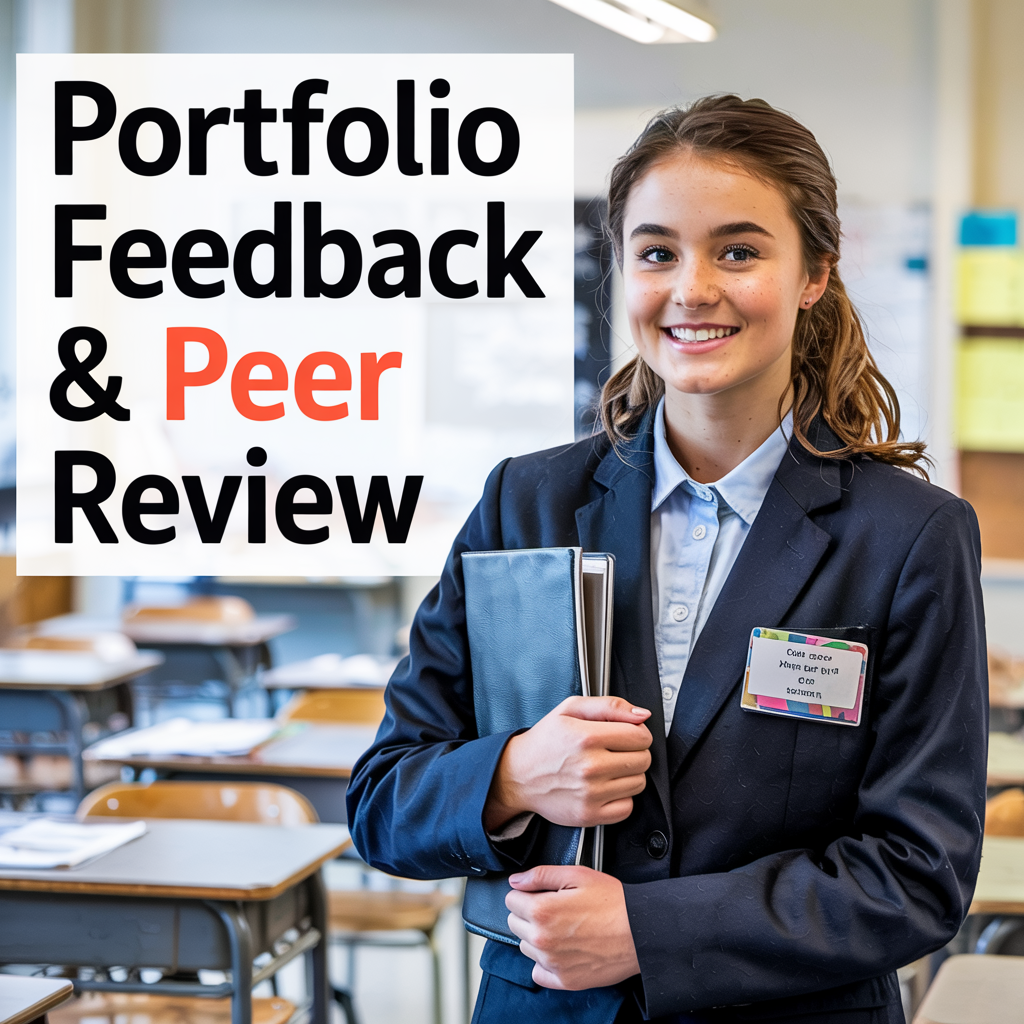Portfolio Peer Review Party: A Fun Guide to Getting Actionable Feedback

You’ve spent hours building your digital portfolio, adding projects, and polishing descriptions. But how do you know if it’s actually effective? Getting fresh eyes on your work is essential. One great way to gather portfolio feedback ideas is to organize a peer review session – maybe even make it a “party”! This peer review guide offers steps to structure a fun and productive session with friends or classmates to get constructive criticism portfolio improvements rely on. Share your work and get valuable feedback on your portfolio by inviting peers for a review. Learn more at Cirkledin.
Why Peer Feedback is Golden for Your Portfolio
Your friends or classmates might spot things you missed:
- Typos or Errors: Easy to overlook your own mistakes.
- Clarity Issues: Is your project description confusing? Do links work?
- First Impressions: What stands out immediately (good or bad)?
- Navigation Problems: Is it easy to find information?
- Missing Information: Did you forget to explain something important?
- Different Perspectives: They bring fresh eyes and might interpret things differently.
Getting portfolio feedback helps you see your work from an audience’s point of view.
Turning Review into a “Party” (Making it Fun!)
Okay, maybe not a wild party, but make it enjoyable!
- Snacks and Drinks: If in person, simple refreshments make it feel more social.
- Good Atmosphere: Play some background music (quietly!). Keep it relaxed.
- Small Group: Keep it manageable (3-5 reviewers is often ideal).
- Reciprocity: Offer to review their portfolios (or essays, etc.) in return.
- Positive Framing: Emphasize that the goal is supportive improvement.
Planning Your Peer Review Session: The Setup
A little structure goes a long way.
Invite Your Reviewers (Choose Wisely!)
- Ask friends, classmates, or mentors whose opinions you trust.
- Choose people who will be honest but kind.
- It helps if they have some context (e.g., other students applying to college) but diverse perspectives are also good.
Set the Scene (In-Person or Virtual)
- In-Person: Find a comfortable space with good Wi-Fi and maybe a large screen if reviewing together. Have laptops/tablets ready.
- Virtual: Choose a video conferencing platform (Zoom, Google Meet). Ensure everyone knows how to share screens if needed.
Prepare Your Portfolio and Specific Questions
- Have your portfolio link ready and ensure it’s working perfectly.
- Think about specific areas you want feedback on. (e.g., “Is my ‘About Me’ section clear?” “Does my project description for X make sense?” “Is the navigation intuitive?”) Write these down.
Create a Simple Feedback Guide or Checklist
Provide reviewers with some structure. A portfolio review checklist helps them focus and ensures you get feedback on key areas. (See examples below). This guides them toward providing actionable feedback. Discover resources and connect with peers for portfolio feedback at Cirkledin.
Running the Peer Review Party: The Process
Here’s a possible flow:
Quick Introductions and Goal Setting (5 min)
- Briefly state the goal: To get helpful feedback to improve your portfolio.
- Mention any specific areas you’re concerned about.
- Hand out or share the feedback guide/checklist.
Focused Review Time (15-25 min)
- Give everyone time to explore your portfolio independently.
- Ask them to jot down notes on the checklist or a separate document.
- This can be done silently or with quiet individual work.
Structured Feedback Sharing (15-25 min per portfolio if reviewing multiple)
- Go around the group. Ask each person to share feedback.
- Rose, Bud, Thorn Method (Optional): Ask for one positive thing (Rose), one potential area for improvement (Bud), and one thing that’s unclear or problematic (Thorn).
- Focus on the Checklist: Go through checklist questions one by one, getting input from everyone.
Facilitate Discussion (Keep it Constructive)
- Your role (if it’s your portfolio being reviewed) is mostly to LISTEN and take notes. Avoid getting defensive. Ask clarifying questions like “Can you tell me more about why that felt confusing?”
- Encourage specific examples. “Hard to navigate” isn’t as helpful as “I couldn’t easily find your contact information.”
- Keep the tone positive and focused on improvement. Thank everyone for their time and input.
Sample Portfolio Review Checklist Questions
- First Impression: What’s your immediate reaction? What stands out most?
- Clarity: Is the purpose of the portfolio clear? Is the language easy to understand?
- Navigation: Is it easy to find different sections (About, Projects, Skills, Contact)? Do all links work?
- Content: Are the project descriptions clear? Do they explain the goal, your role, and the outcome? Is there enough detail? Too much detail?
- Visuals: Are images/videos high quality and relevant? Do they load properly? Is alt text used (if known)?
- Design: Is the design clean and professional? Is the text easy to read (font, size, contrast)?
- Overall: What is the strongest part of the portfolio? What one suggestion would make the biggest improvement?
- (Add your specific questions here)
After the Party: Processing the Feedback
- Review your notes while the feedback is fresh.
- Look for patterns – did multiple people mention the same issue?
- You don’t have to implement every suggestion, but seriously consider recurring themes or points that resonate with you.
- Prioritize changes that will have the biggest impact on clarity and professionalism.
Final Thought: Feedback Fuels Improvement
Getting honest feedback is a gift, even if it’s sometimes hard to hear. A structured peer review session, framed as a fun and supportive “party,” is one of the best portfolio feedback ideas. Use this peer review guide to gather actionable insights and make your portfolio even stronger.
Need more tips on college applications, scholarships, or just how to survive this whole process? Cirkled In has your back—check out Cirkled In resources to help you through every step of your college journey!
Check out Cirkled In and start owning your future today!



10 Comments
daltonmaltin · July 22, 2025 at 1:12 pm
want to learn more
Amy S · July 24, 2025 at 12:40 pm
Thanks for jumping in, Dalton! 🙌 We love that you’re curious and want to dive deeper—that’s the perfect mindset for portfolio glow-ups 🌟
Keep that learning spirit alive
lennox · July 30, 2025 at 3:54 pm
goood
Amy S · August 1, 2025 at 11:52 am
Thanks for the love, Lennox! 😄
We’re glad you thought it was goood—we’ll take the extra “o” as extra enthusiasm! If you try out a Portfolio Peer Review Party yourself, we’d love to hear how it goes. 🎉📝 Keep that feedback energy flowing!
Mary pen · September 12, 2025 at 11:13 am
Very awesome ,great capacity
Amy S · September 12, 2025 at 12:24 pm
Appreciate that, Mary! 🙌 Glad you found it awesome—here’s to tapping into that great capacity together.
brit · September 28, 2025 at 11:58 pm
Very awesome ,great capacity
Amy S · September 29, 2025 at 11:29 am
Appreciate that, Brit! We love hearing that you found it awesome—peer power really does bring out the best ideas!
wd · October 2, 2025 at 8:04 pm
great
Amy S · October 3, 2025 at 1:14 pm
Awesome, Elias! 🙏 What’s your favorite way to get feedback?